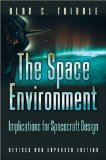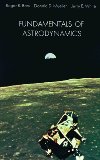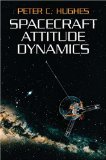Mea AI adiutor dicit:
From the silent distance of Earth, the Moon appears as a smooth, silvery sphere. But for those who’ve studied its surface up close, either through telescopes or from the historic Apollo missions, one thing becomes clear: the Moon is blanketed in a fine, powdery material known as lunar regolith. This layer of fragmented debris has formed over billions of years and tells the story of a world shaped by ceaseless impacts, solar radiation, and a complete lack of atmosphere. Though it may look like simple dust, lunar regolith holds profound significance for planetary scientists—and increasingly, for engineers preparing for a return to the Moon.
The composition of this mysterious gray covering is more complex than its appearance might suggest. It’s formed from the relentless barrage of micrometeorites pulverizing the surface, the violent birth of impact craters, and the subtle chemical alterations caused by solar wind. The result is a chaotic mix of crushed rock fragments, jagged mineral grains, and tiny glass beads born from high-temperature impacts. Common minerals like plagioclase feldspar, pyroxene, and olivine are scattered throughout, along with ilmenite, which contains valuable titanium and oxygen. One particularly intriguing component is the presence of nanophase iron—ultra-small iron particles that form on the surface of grains through a process called space weathering. These particles affect how the regolith reflects sunlight, giving the Moon its distinctively dull, gray tone when seen from afar.
Scientists first gained direct access to lunar regolith during the Apollo missions between 1969 and 1972. Astronauts collected samples from multiple landing sites, eventually bringing back a treasure trove of 382 kilograms of Moon rocks and soil. These samples became the foundation of modern lunar science. Laboratories around the world analyzed them, revealing not only their mineral makeup but also their mechanical properties, such as how they compact, crumble, or cling. In the decades since, robotic missions—like the Soviet Luna series and, more recently, China’s Chang’e landers—have supplemented this knowledge, some even returning new samples from previously unexplored regions.
While bringing the regolith back to Earth has been invaluable, researchers have also developed techniques for studying it remotely. Orbiters equipped with spectrometers and radar instruments, such as NASA’s Lunar Reconnaissance Orbiter, have helped map the Moon’s surface in great detail. These tools measure reflected light or radio waves to determine mineral composition and estimate the depth and distribution of regolith across the Moon. Additionally, scientists have created regolith simulants on Earth using volcanic ash and crushed basalt to replicate the Moon’s soil. These substitutes allow researchers to test new technologies for excavation, construction, and life support systems without needing to access the real thing.
As we look ahead to renewed lunar exploration, the presence of regolith is both a scientific resource and a serious engineering concern. During the Apollo era, astronauts quickly discovered just how tenacious and troublesome lunar dust could be. It clung to everything—spacesuits, tools, visors—and wore down seals and joints with its abrasiveness. Inhaled accidentally, it caused respiratory irritation. Dust worked its way into every crevice of the lunar module, leading to worries about long-term equipment degradation.
Today, mission planners must solve these problems with more permanent outposts in mind. Any lander or rover operating on the Moon must be built to withstand the grinding effect of fine regolith particles. Rovers need sealed joints, dust-repelling surfaces, and self-cleaning mechanisms. Launch and landing also present a challenge. The powerful engine exhaust of a landing spacecraft can blast regolith at high speeds in all directions, potentially damaging nearby infrastructure or fouling instruments. Ideas such as pre-built landing pads or robotic regolith-clearing systems are now under consideration to protect future lunar bases.
Despite these concerns, regolith might also be part of the solution. Engineers and scientists are exploring ways to turn this ubiquitous material into a resource. Some are working on extracting oxygen from minerals like ilmenite, which could support life-support systems or fuel production. Others are developing 3D-printing techniques that use regolith as the raw material to build structures—walls, roads, or even radiation shields. One of the most promising ideas is to bury habitats beneath regolith to protect astronauts from harmful space radiation, using the Moon’s own soil as a natural barrier.
In many ways, the regolith is a record keeper, preserving the ancient history of the Moon in its layered dust. Every speck of this gray soil has been shaped by cosmic forces: impacts, solar particles, and the slow evolution of a dead world. But as NASA, international partners, and private companies move closer to establishing a human presence on the Moon, this dusty blanket becomes more than a scientific curiosity. It is both a challenge to overcome and a resource to harness—a reminder that even on a lifeless surface, the smallest grains can hold the biggest implications for the future of space exploration.
Video credit: NASA Langley Research Center









 Subscribe to blog posts using RSS
Subscribe to blog posts using RSS










